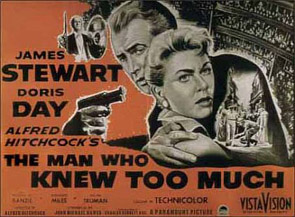|
|
A-List: Unappreciated Hitchcock FilmsBy Sean CollierSeptember 2, 2008
The Man Who Knew Too Much (1934) The self-remade American version of this film is more widely known and much more widely seen. Hitchcock considered the later version, made in 1956 with Jimmy Stewart and Doris Day, to be the superior of the two films; truth be told, it probably is, with some beautiful Technicolor representations of Morocco and the overuse of "Que Sera Sera." However, to ignore the 1934 version is a crime; there's a charming opening in Swiss Alps, completely with a hilariously shot skiing accident, and plenty of '30s charm to go around. Plus, it has Peter Lorre as one of the villains, speaking English on screen for the first time. Not comprehending it, though. He still didn't speak the language, so he learned the words phonetically. Which is pretty hilarious. Strangers on a Train I know, I know – Strangers on a Train isn't under-appreciated. It's one of the most beloved and studied Hitchcock films. Here's the trouble, though – some morons are remaking it. The retread has been trapped in development hell for years at Warner Bros, with several potential directors bailing out already; this does not give me much faith in a calm, balanced, artful remake. The script is by David Seltzer, scribe of the original Omen...but the details are not important here. These stories, good as they were, are permanently tied up in Hitchcock's eye, and mind. This is one of the many reasons why Gus Van Sant's Psycho sucked – even if you do exactly what Hitch did, you still can't come close to doing what Hitch did. They're timeless, but they're products of one director at one time. They can't be remade. I'm off on a rant here, so to bring it around to the point: if for some reason you haven't seen Strangers on a Train, make it a priority. To see some tossed-around remake without seeing the brilliant original would be a cardinal sin.
|

|
|
|

|
Friday, November 1, 2024
© 2024 Box Office Prophets, a division of One Of Us, Inc.


